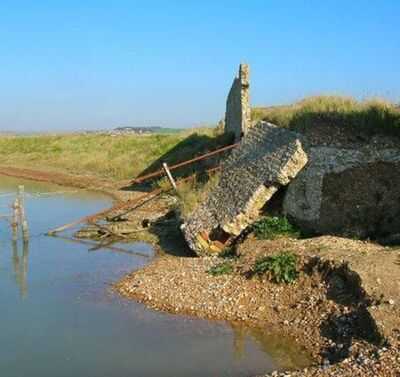
Contrary to popular belief, the UK is home to many haunted and abandoned sites - perfect for a visit this spooky season. One particular seaside town has been reported to be a complete ghost town, once rife with life, due to the forced evacuation of residents. Today, it is nothing more than ruins and fallen brick. Within the marshlands of Sussex, keen observers will spot the decaying Tide Mills.
Not even a century has passed since the village stood, a recognised location of the South coast. Surrounding a tidal mill first built in 1761, the close community was initially simple, rural living, with men and women working together to produce sacks of corn, wheat and flour. However, in 1795, Tide Mills fell under attack... by none other than English troops themselves, attempting to leave the seaside town high and dry.

England's troops, hungry from fighting in the Napoleonic Wars, set out to steal a significant 200 sacks of flour, which would have devastated the village if they were not caught swiftly and executed. 10 years later, Tide Mills expanded to include a monumental greenhouse after William Catt aquired the crucial mill. Obsessed with exotic fruit, Catt grew pineapples and figs, reports the Tide Mills Project.
And whilst sounding adorable, the truth of Catt's 'reign' over the village was much more dire. With tall walls built around the town and a strict curfew set at 10.10 pm where the gates were locked, many villagers suffered consequences for being just 10 minutes late. The Mirror writes that Catt would refuse late-returners further beer tokens for the local pub and place them on 'village arrest' for an entire month.
This strict law led to two tell-tale signs of the death of Tide Mills' business. With the railway extended to Seaford in 1864, travel for farmers' produce to reach London was both cheaper and easier than ever before. So when the mill suffered extensive damage 10 years later due to a severe storm, and being in such close quarters to the sea, the Tide Mill business never fully recovered.
The Tide Mills Project commented on the final closure of the Mill in 1883, saying: "The Mill, which provided work for so many men, had stopped and the beating heart of the village fell silent. The Mill buildings were converted and used as warehouses where some of the men continued to work". Other community strongholds began to disappear too, such as: the blacksmith; carpenters; and even the school. Those who stayed tried their best to survive, making it to the town's revival as a port for ships guided by radio, and the later seaplane station base (1917), attracting soldiers and army planes to the beach.
This barely lasted, with a government Housing Act in 1930 deeming the homes as unfit for human habitation. The lack of investment into the town led to a 1936 petition to escort villagers from the crumbling town. The following year saw a Daily Mail headline reading "The Hamlet of Horror" which spotlighted the lack of basic human needs: electricity; running water; and sewage facilities. That year Seaford lavelled the village uninhabitable and awarded residents nine months to officially move, including patients at Chailey Marine Hospital. Any who remained by 1940 were forcibly evicted.
Today, what remains is a crumbling Station House and the remaining railway - the builidings having been demolished to clear the view for fighting soldiers during WWII. Now, locals and visitors can explore the populare cycling route.
You may also like

Kane Williamson announced his retirement just before the T20 World Cup, dealing a major blow to New Zealand.

The incredible £760m skyscraper with world's highest restaurant, pool and rainforest

After whirlwind political engagements in poll-bound Bihar, PM Modi prays at Patna Sahib Gurdwara

"PM Modi's arrival filled people with enthusiasm": BJP's Ram Kripal Yadav after Patna roadshow

Quick & Easy Ghee Trick: Turn Cream into Granular Desi Ghee in 5 Minutes Using Pressure Cooker







